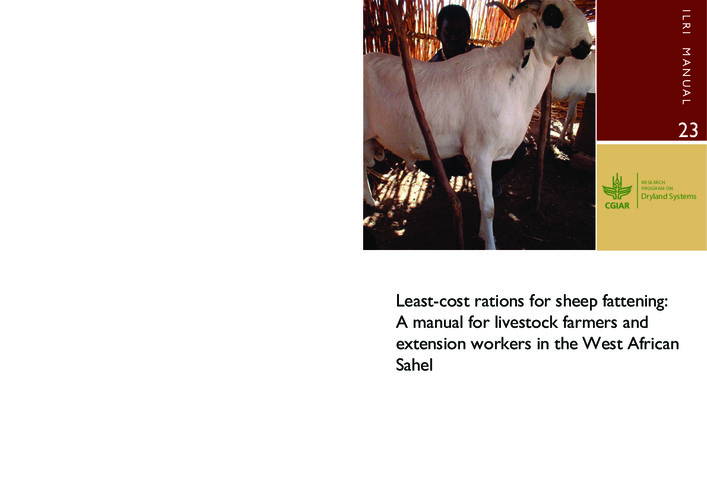Least-cost rations for sheep fattening: A manual for livestock farmers and extension workers in the West African Sahel
Abstract
Sheep fattening is an increasingly important economic activity in the West African Sahel, particularly in and around
Tabaski, the Islamic festival of Eid-al-Kabir (Ayantunde et al. 2008). The low level of initial investment, rapid turnover
rate, the high degree of social acceptance and easy access to the market make sheep fattening extremely attractive
to poor farmers, including women. It entails feeding young sheep for a short period, leading to a 30–40% increase in
edible carcass yield.
The main strategy is to fatten young, lean male sheep, born on-farm or, more frequently, purchased on the open
market, over a two–three-month period. Fattening is increasingly providing opportunities to rural and suburban
Sahelian communities to improve household food security and incomes. Sheep farmers traditionally feed their animals
with whatever food that is available: feed waste when available and underfeeding in times of shortages. Consequently,
growth rates in traditional sheep fattening have remained low and largely unprofitable.
Many studies have been conducted to develop alternative feeding strategies to make sheep fattening profitable. This
manual provides simple and tested practical guidelines for livestock farmers and extension workers on least cost
ration based on locally available feed resources for sheep fattening. It contains details on feeding and management
options that can be applied by small-scale producers. Other key issues addressed in the manual include housing,
purchase of feed, general hygiene and the handling of animals

